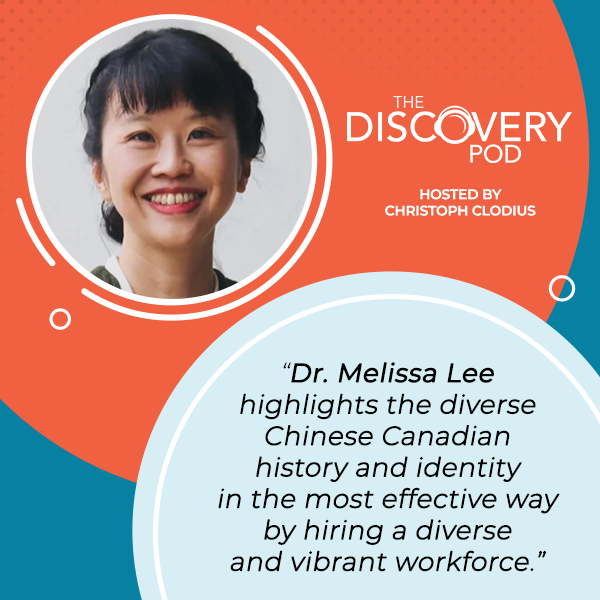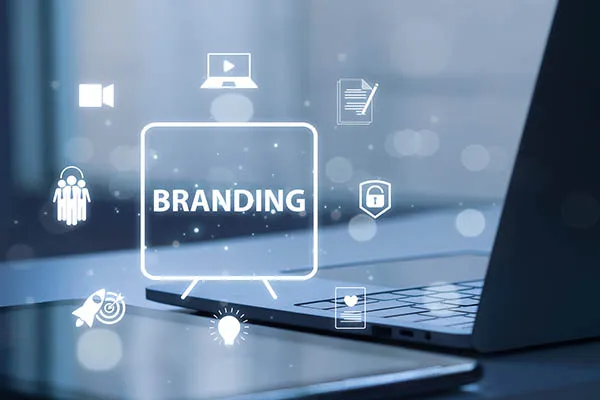
The recently opened Chinese Canadian Museum in Vancouver celebrates the contributions and sacrifices of Chinese Canadian communities across the country. The museum’s CEO Dr. Melissa Lee joins Christoph Clodius to talk about their new role, the Director of Development. Dr. Melissa explains the responsibilities of the person what will be hired for this position, as well as the requirements and qualities they are looking for. She also shares about the Chinese Canadian Museum’s mandate, mission, and startup culture centered on energetic interaction and inclusivity.
—
Listen to the podcast here
Chinese Canadian Museum With Melissa Lee, CEO
I’m pleased to be talking about the new Director of Development role with the Chinese Canadian Museum here in Vancouver. I’m joined by Melissa Lee who is the CEO of the museum. Welcome, Melissa.
Thanks for having me here.
My pleasure. Great to chat with you again and I’m enjoying to looking forward to our conversation about the director. Let’s launch right in then for that matter. We’re talking about the Chinese Canadian Museum, which just opened on July 1st, 2023 for that matter. For someone who may not be familiar with the museum, can you tell me a little bit about it?
The Chinese Canadian Museum is the first of its kind in Canada and it honors and celebrates the contributions and sacrifices of Chinese-Canadian communities across the country. We’re based at 51 East Pender Street, which is our permanent location in the Wing Sang Building, the oldest building in Vancouver’s Chinatown. We also have a satellite branch in Victoria in Fan Tan Alley. We opened our permanent space on July 1st, 2023 but we’ve been registered as a charity since March 2020.
It’s taken some time to get to this opening for that matter when such community involvement. Maybe you want to tell me a little bit about the community involvement in the process that got you here.
It has taken some time, three years, and that is quick. The estimates from the time of formation to opening a museum usually are 8 to 10 years. We did it in three years with mass and broad community involvement. It came out of a working committee in 2017 where a group of committed citizens from the Chinese-Canadian community, including my board chair, Grace Wong, did a canvas and study groups and consultations across the province to see what museum or how a museum would look like for the Chinese-Canadian community. The support is mainly across the board, not only funding from three levels of the government, municipal, provincial, and federal but also from private donations across the country. Not just in BC but also across Canada.
It has been such a strong collective effort. You mentioned Grace, certainly as the leader of the group and the board chair, as well as the rest of the very illustrious board. I recommend anybody who wants to learn more about the museum to have a look at the website to get a sense of the partners involved. Pivoting a little bit to the museum itself, tell me a little bit about the mission and mandate of the museum. It plays such a key central role in the history of Chinese Canadians and the communities at large that make up the Chinese-Canadian community. Tell me a little bit about that mandate and mission.
The mission is to showcase the Chinese-Canadian experience. What that means is celebrating Chinese Canadian stories and recognizing the significant contributions of Chinese Canadians and what they have contributed to Canada in society. What does that look like for exhibitions? It’s honoring the past histories. We have three exhibitions. Our feature exhibition is called The Paper Trail. It’s all about the 100 anniversary of the Chinese Exclusion Act. We also have another exhibition called Migrations and Odysseys, which is an introduction to Chinese-Canadian migrations featuring indigenous Chinese longstanding cultural ties from as far back as 1788 to present-day migrations. Talking about how Chinese Canadians are diverse, not just from Hong Kong and China, but all over the world.
Demystifying a lot of these histories and weaving them back into Canadian history and Canadian identity where it belongs. Something else to mention is that we are doing history exhibitions, but we’re also committed to doing cultural exhibitions as well. We’re not just looking at heritage, but we’re looking at culture. We are forward, future-facing. We work with artists who are working now. We work with Chinese-Canadian artists, with indigenous artists, and we commission to make the museum a vibrant and lively place and to celebrate and support young voices as well.
The Chinese Canadian Museum is unique because of its future-facing vision that allows them to work with a diverse group of artists who make the place vibrant and lively. Click To TweetThat’s quite compelling as I understand it as well. It’s the only museum of its kind in Canada for that matter. Other museums and galleries may be taking occasional or piecemeal approaches, but this is quite a comprehensive work, as you say, both historical and cultural, and also over such a long time tenure as well. It’s quite a compelling museum and recommend everybody come visit it in Chinatown for that matter.
Pivoting a little bit to the role we’re talking about, now that the museum is open, a fair amount of fundraising has been done on the capital side. On the campaign work so far, you’re hiring a Director of Development to launch strategic and proactive fundraising within the museum. Tell me a bit about that. Why are you hiring somebody at this point in the lifecycle of the museum?
As we opened, what we’re doing is building together our senior management team and a key integral part of every museum senior management team is the fundraising aspect. Almost every museum operation covers 1/3 of museum costs. Other points of fundraising and revenue include grants, private donations, and rentals. It’s building out operational sustainability that’s important. A large part of that is the fundraising and operations. The director of development is a key member of the team who is forward-facing. It’s a part of the museum’s image that’s important.
I like how you captured that in previous conversations as well. This person’s a part of building the museum with you fundamentally because it is still early days. Despite these fantastic exhibitions that you’ve talked about, there’s still some work to be done to make sure that the museum at large is fully functioning. Tell me a bit more about what you envision the director doing specifically. As you said, they’re forward-facing. They’re also working internally with you and other team members for that matter.
We’re a very small team. We’re right now eleven full-time staff and there is a marketing and finance director. What this Director of Development would do is work very closely with these two members of the team and also myself in shaping the museum for the next few years. The director of development works very closely with the marketing director. A lot of it is branding and identity, and sometimes it’s working out different packages that make sense for corporate donors or corporate sponsors.

Director of Development: A lot of the Director of Development’s responsibility is in branding and identity. Sometimes, they will also work out different packages that make sense for corporate donors and sponsors.
It’s also working closely with exhibitions to understand what donors want to fund in terms of specific exhibitions that change every year. All these conversations are with a very close-knit team. We’re not a large organization. However, the building that we own is 27,000 square feet. There is an opportunity here to be pretty creative and make this role your own in the way that one would want to make it their own. We are a brand-new museum, and we’re a pretty energetic creative team that’s open to new ideas.
It is truly a build in many senses both physically and operationally I suppose, in the sense of building out the fundraising plans and activities of the museum. Tell me a bit more about the culture among the staff. You talked about being an energetic and creative group. What is the culture of the organization’s staff lead? What is the culture you’re trying to create and have for that matter in your team?
We are in a startup culture mode. Startup culture means that the staff, including the directors and myself, can do everything from meeting government officials like the premier or the mayor in the morning to moving the chairs in the afternoon outside of the boardroom to set up for an event to alarming, locking up, refilling the water filters, stopping by stables to get more things. These are regular everyday occurrences. Running down to Newtown Bakery to get extra food for the volunteers. There’s no job that’s too small or too large that we end up doing. If you think about it, you think it needs to be done, or the procedure needs to be made or put together, you put it into action.
That’s the startup culture at the moment. We’re putting more structure into place, but that is where we work. We’re a young team in the way that the majority of the staff are Millennials or younger. I could say we’re not casual, but we are humorous or irreverent. There’s a lot of jokes in the team, but there’s also a lot of inclusion for people’s idiosyncrasies because again, we’re a small team. I would say that the majority of people that have worked for us, the thing that they have talked about, what they enjoy is the people.
It seems like you’re a group that takes the work very seriously, but you can also have fun doing it. I certainly get that sense in speaking to you and others on the team. You also shared with me that the museum staff is Canada’s only museum with a full BIPOC staff for that matter. In the spirit of inclusivity that you mentioned before, why does that matter to you and how does the museum work to engage this diverse and inclusive workforce?
This matters to me on multiple levels. It matters to me because most museums and art galleries, not just in Canada but around the world, are majority non-BIPOC. These past couple of years, there has been a reckoning in museum culture that museums need to be more diverse. Part of the reason why museums are not as diverse is because of longstanding colonial legacies that people have not prioritized. For us as a brand-new museum, it’s something we can start on the right foot and prioritize.
Part of the reason why museum staff is not that diverse is because of their longstanding colonial legacies that people have not prioritized. Click To TweetThe other thing is, as I said, the Chinese Canadian Museum, what we want to do in our mission and values is weave back our histories and contributions into a more diverse Chinese-Canadian history and identity. For us, it’s not just about Chinese-Canadian history, but it’s about a more diverse Canada. To implement that idea of a more diverse Canadian history, the best way we can do that is to make sure we have diversity amidst our workforce and staff that will implement and push this forward. We have the mission and values, but we believe it on a practical level where we try to operationally make sure that happens as much as we can.
I was going to say living and breathing those values is exceptional and leading by example in many ways. It’s such a crucial piece. Thank you for sharing that. Thinking about the new director coming on board, how would they earn a gold star on your team and in working with you? What are you looking for in terms of their accomplishments and achievements, perhaps?
I prize people who feel like no job is too small, but can also think of the big picture. That’s not necessarily different. I know that seems like it could be different, but for example, somebody that’s willing to lick the envelopes may understand the big picture that we need to get these things out now and they’re the quickest person that can do it, rather than to delegate. That person who can think a big picture can also understand that they shouldn’t always lick the envelopes. It may be a one-time occurrence. What I prize is that big picture thinker, but someone who cannot think that they’re too big to do any small job.
I was going to say that envelope-licking is a good analogy for that matter. While not losing sight of the high net worth individuals, the significant donors that have already contributed to the museum, that perhaps still have an interest in supporting and will need some good stewardship and follow up and some work to be done there. As well as the board and community connections that you already have that may still be in play to make sure that all elements of the donor pyramid in some ways are being either developed or maintained or growing as the case may be. That’s a great summary and I like the way you’ve captured that.
Since we’re a new museum and a young museum, I’m open to learning from this role. Whoever is the new director of development, I look forward to having this person also teach myself and members of the staff the best practices and the best way forward in doing the best for fundraising for the museum.
What we’ve talked about is a seasoned generalist in some ways, someone who can manage various programs and various elements, but also is very strategic and thoughtful in what the best approaches and best strategies may be for the museum to build on successes so far. Let’s say someone is considering this role. They’re gainfully employed in another organization perhaps, or they’re considering this opportunity. What do you think are the most compelling reasons for someone to come join you at the museum in this work?
What’s compelling is that there is room for advancement. Someone who works in a larger organization may feel more excitement seeing this as a promotional opportunity, maybe as an opportunity for them to do things in the way that they would like to do things. Some people might find this interesting in that you’re not only doing things in your specific sector or your specific role. There’s an opportunity to be more expansive in the way that you work and do your job. Very open to creativity from all staff on my team. That can be compelling for people.
Thinking about as well as we’ve talked about this community of support working with such an engaged and active community of funders, the community of board members for that matter. They’re very keen, an incredibly impactful organization with a fantastic mission. Being able to further that work is quite compelling as well.
There’s also an opportunity to meet with so many different types of people. We have a lot of VIP guests who come by the museum from all different walks of life, not just from Vancouver but across Canada, and internationally. There’s an element of really expanding and broadening your network if you come across as well.

Director of Development: Being the Director of Development gives one an opportunity to meet different types of people not just from Vancouver but across Canada and the whole world. It is a huge element in expanding your network.
It’s such that the donor development tool, the museum, as a tactile way to engage potential donors is such a win-win in so many ways. This has been a wonderful conversation, Melissa. Just in closing, any final messages or comments for potential candidates or curious individuals as they mow this opportunity?
Even if you’re a little bit interested, there’s an inkling. Whether you want to do it anonymously or not, the best is to come by, walk through the museum, and see if you can envision yourself here. That’s an important tool in understanding whether this job is for you.
That’s a great piece and a great thing to close on. I welcome conversations and questions. We’re very much an open book, we’re very transparent about the opportunity, what’s compelling about it, and what the future may hold. If anybody is interested, please feel free to reach out to me at [email protected]. They’re welcome to check out the museum and the museum website and learn more about you and your background. I’m excited to be working with you and uncover some wonderful candidates for the director role. Thank you again for your time.
Thanks so much, Christoph.
My pleasure. Thank you.


